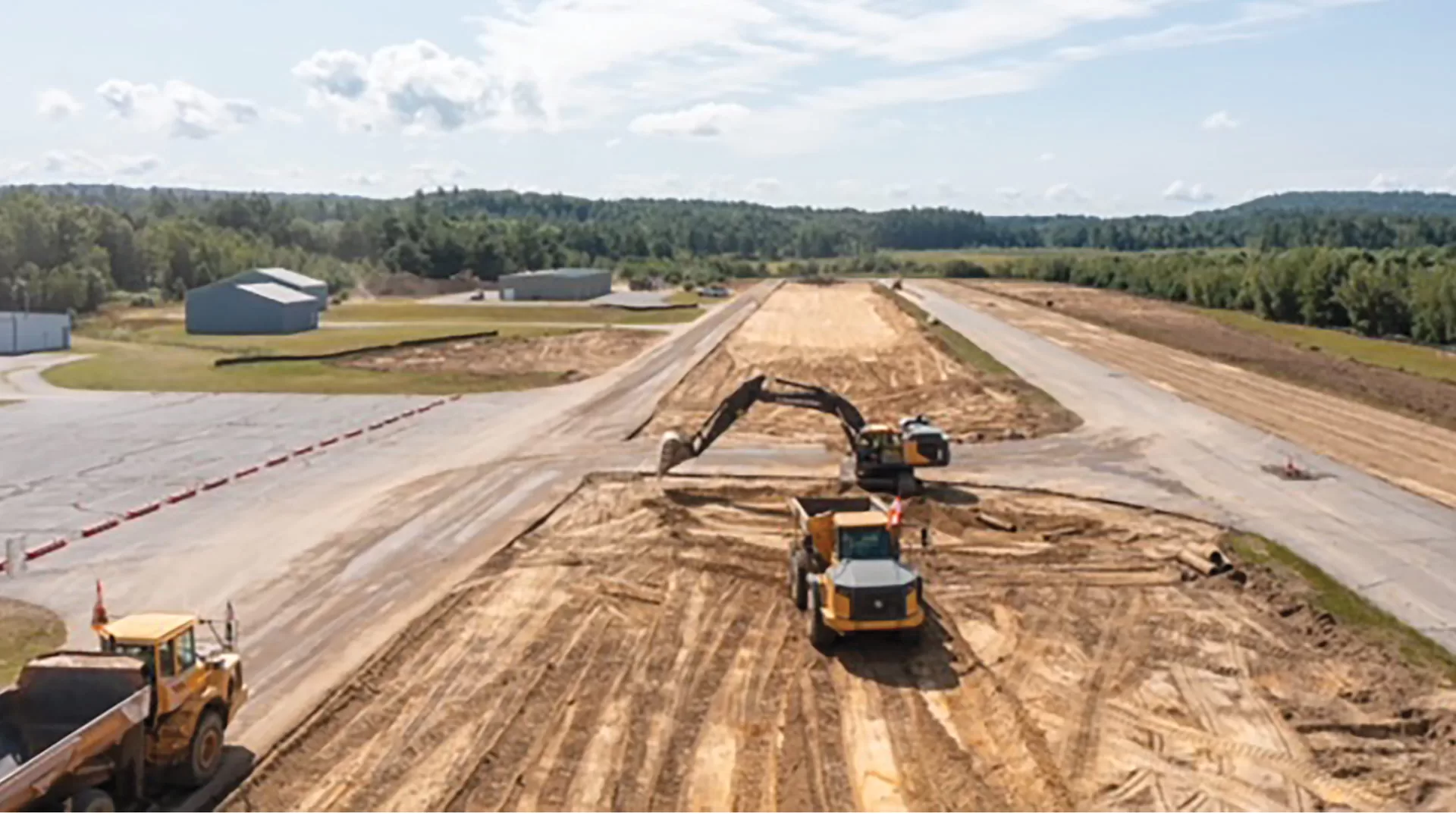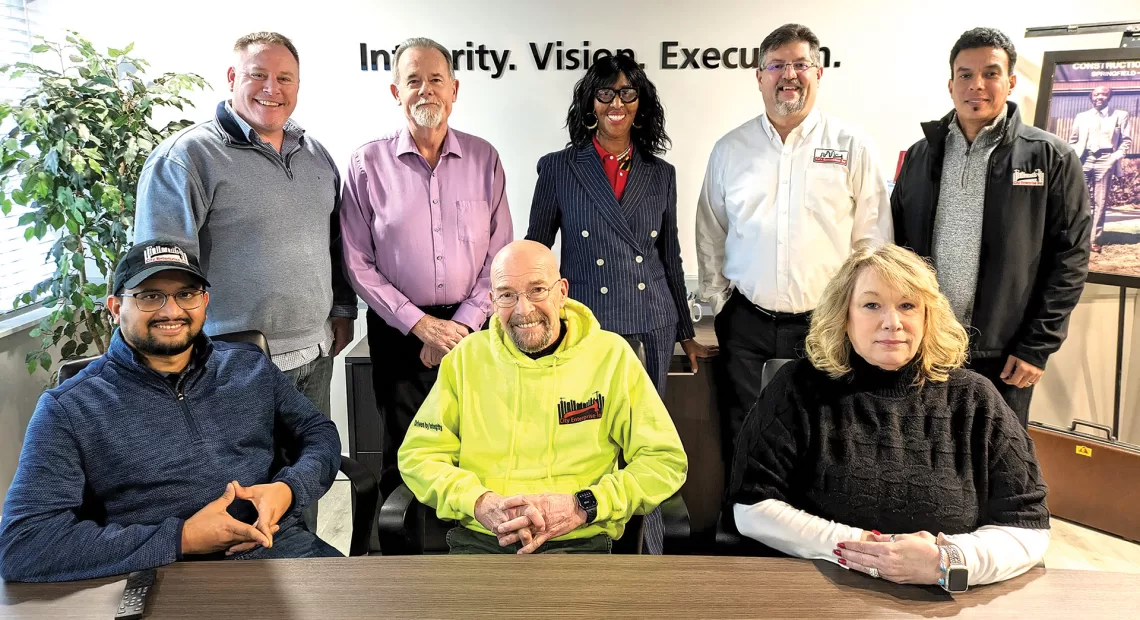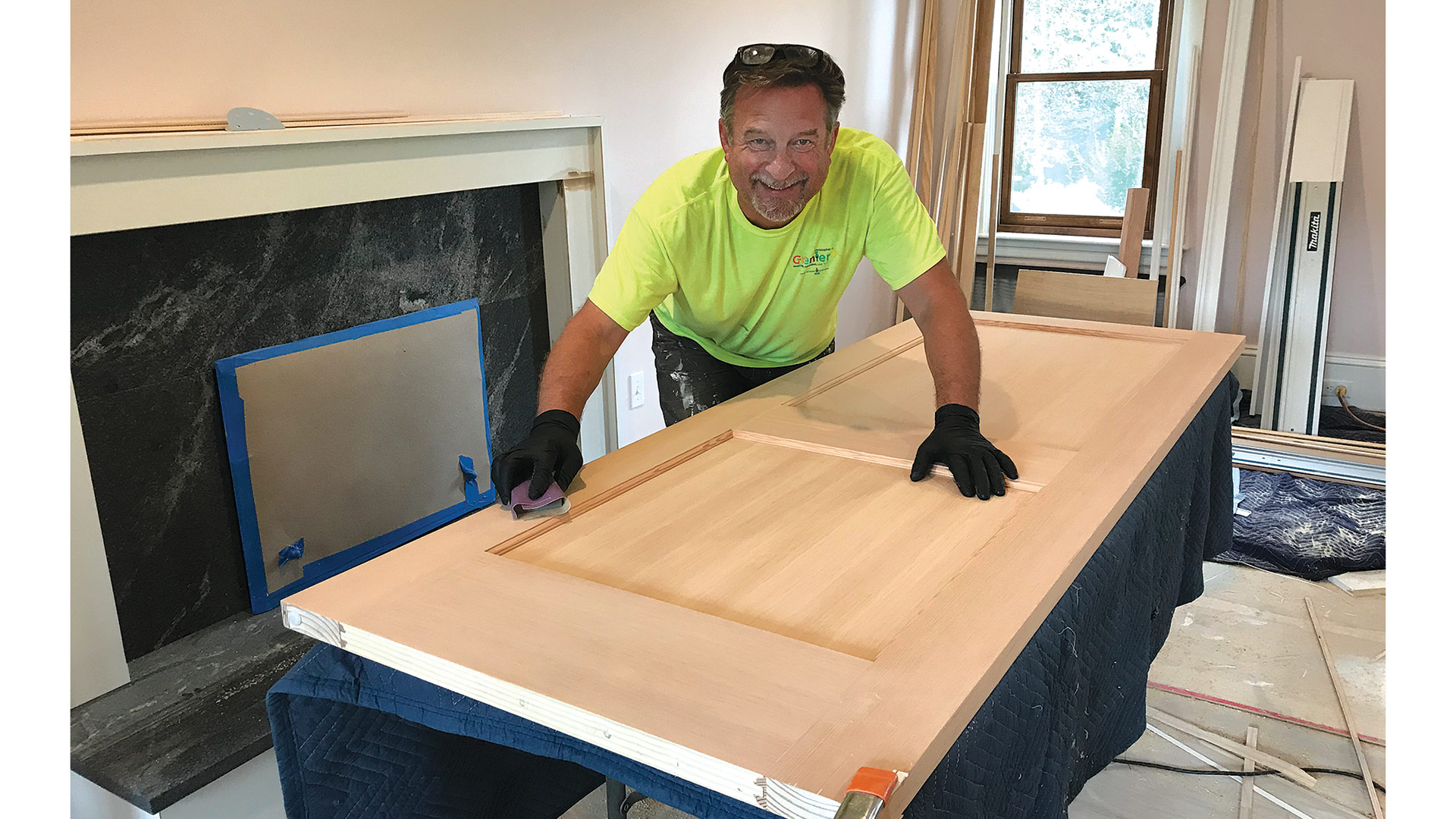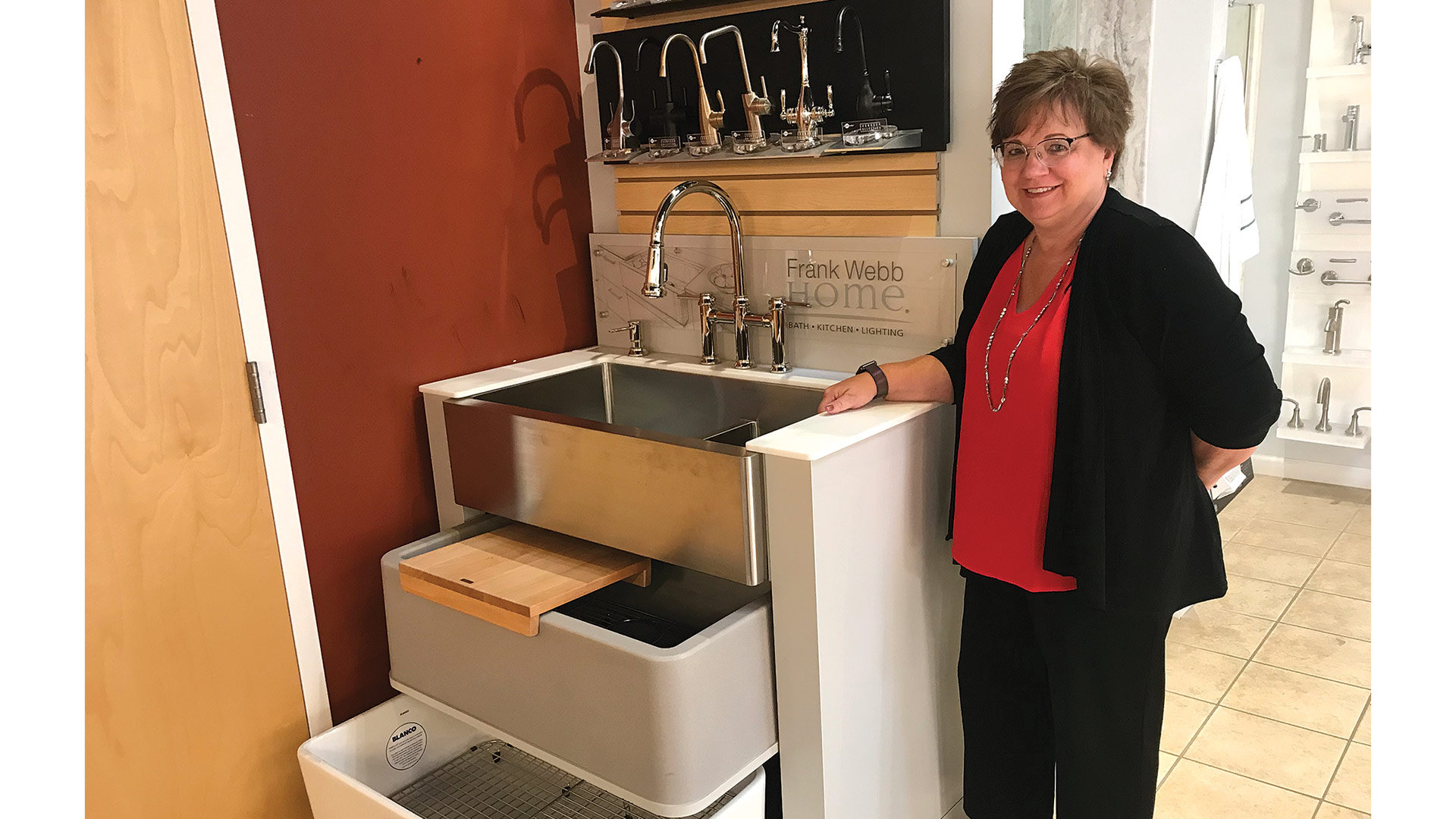Building on Momentum

Wonderlyn Murphy (standing, center) with her leadership team at City Enterprise.
To Wonderlyn Murphy, a successful construction project can be defined in different ways. And one of those is how gratifying it is.
Take the new digital marquee sign at the MassMutual Center, which displays upcoming events, weather, and other information. Springfield-based City Enterprise built the structure that holds the digital display in place and ran the electrical work. The stone exterior in that area of the building had to be removed, reconfigured, and reinstalled after significant steel reinforcement was added to the wall structure to support the 40-by-25-foot display.
“That’s a brand-new sign, and it’s a big deal for Springfield and a big deal for us. We wanted that contract because of everything that Springfield is doing,” said Murphy, City Enterprise president, noting other developments happening in the downtown area, like the transformation of the former Court Square Hotel into housing. “To be part of what’s happening in Springfield, for me, is important.”
Another gratifying project is City Enterprise’s work on Martin Luther King Jr. Community Presbyerian Church, which was set ablaze by an arsonist in December 2021.
“We’re currently working on rebuilding that, to make sure that they have services again,” Murphy told BusinessWest. “It’s a very significant project for us, being a local contractor, and that being an African-American church with all its history. It’s an important project for us, very close to home.”
In terms of sheer volume of work, Murphy said, “it’s been challenging finding the right opportunities for us to bid. We have found them — we have an excellent estimating department that fishes out all these opportunities to bid. But it’s slim pickings out there.”
That said, she added, “it’s cyclical. As the summer comes along, we’ll find more opportunities that fit within our wheelhouse.”
City Enterprise has been involved in an array of intriguing projects, though, from laboratory renovations at UMass Lowell and two projects at UMass Amherst’s Mullins Center — an HVAC system overhaul and chiller replacement — to work at the Moakley federal courthouse in Boston and a complete rebuild of a security entryway for the Air National Guard at Westfield-Barnes Regional Airport.

J.L. Raymaakers & Sons has been busy on a project at Gardner Municipal Airport.
“That’s a very significant project,” Murphy said of the latter. “We’ll take on any type of challenge.”
Dan Jodice has a similar take on being involved in a variety of projects. As a co-owner of PDS Engineering & Construction in Bloomfield, Conn., he’s seen the 60-year-old firm specialize in a widening list of sectors, including automotive, aviation, education, healthcare, retail, public safety, and more.
“Self-storage facilities are popular now, and car washes and car dealerships have been very popular with our clients over the past three years,” he said. “We can also do schools; we’re renovating a $40 million school in Hartford right now. Usually we do one school at a time, so we’ll do a school job, and when that ends, we’ll start on another one. We’ve also done a handful of churches over the years, and aerospace and aviation are pretty popular.
“We probably could be busier, but we’re happier with what we have now,” Jodice went on. “I’d say 60% of our work is repeat clients, and the other 40% is just getting out there and finding every lead possible.”
Challenge and Opportunity
John Raymaakers Jr. and Josh Raymaakers, directors at J.L. Raymaakers & Sons in Westfield, are plenty optimistic about how business is going, noting that all this year’s projects had been booked by last June.
The firm specializes in excavation, site work, and construction projects of all kinds, including airport runways and taxiways, pump stations, and, most recently, the foundation technique known as sheet shoring. Recent jobs include multiple bridge projects, Gardner Municipal Airport, a pump station in Great Barrington, and a Dunkin’ Donuts in Easthampton. “I’d say it’s a good mix right now,” Josh said.
“These are jobs funded through federal money and have been trickling into our local economy, which is helping us out and giving work for our employees.”
That said, they’ve dealt — like every other firm — with the key challenges of the past several years in construction: higher costs, supply-chain delays, and workforce shortages.
“They’ve been challenges, every one of them,” Josh said. “The pump stations require a lot of electrical components, and those have been an issue.”
Jodice agreed. “The biggest supply-chain issue is for electrical switchgear. If you order that now, it seems like it’s a year out, for some reason. Since COVID, that has not rebounded at all. Everything else is back to normal. Prices aren’t the same — I wish the prices were lower — but the supply chain is better. Ordering a metal building during COVID took six months. Today, it’s three months or faster.”
As for workforce, “we do pretty well,” Josh Raymaakers Jr. said. “Obviously, we would like more, but it’s a difficult challenge to find good people who have experience in our field.”
John recognizes the challenges across the industry as retirees are outpacing new blood, but as someone who grew up around the family business, he said construction is a stable and satisfying career — for those willing to put in the work.

One current job at City Enterprise is rebuilding a security entryway for the Air National Guard in Westfield.
“You can’t be scared to get your hands dirty at first. The problem is, everyone wants to start at the top. But you have to work in the field and get your hands dirty. You have to learn. That’s what our parents made us do,” he explained. “That knowledge from being in the field is crucial, and that’s the hardest thing we’ve got to teach people. We have a project manager and bidder who started as a laborer, then became an operator, then a foreman, and now he’s a project manager. And his experience has been crucial for us.”
Challenges aside, “we’re very busy, and it doesn’t look like it’s slowing down, even with the private-sector work,” John continued, noting that about 75% of Raymaakers jobs are public, and 25% private.”
A great deal of the public work is being driven by a recognition that much infrastructure in Massachusetts is in need of repair, and federal money has been flowing in to help address those needs.
“Those are good opportunities,” he told BusinessWest. “These are jobs funded through federal money and have been trickling into our local economy, which is helping us out and giving work for our employees.”
Jodice said PDS doesn’t do as much public bidding as it does private, bidding maybe six public-sector jobs a year. “We try to stay busy in the private market. Public, you’re bidding against 10 to 15 GCs, and private, it’s maybe five, so there’s a better chance you get the project. And if it’s private, you can land a job more by building on a relationship with the owner and having them select you rather than the low number getting the bid.”
PDS got started six decades ago erecting pre-engineered steel buildings, and still does that work today, along with a much wider variety of projects ranging from commercial and industrial buildings to small fit-outs and large college projects — typically about $60 million worth of work each year across Connecticut, Western Mass., and Rhode Island. It also touts its expertise in the design-build realm.
“The convenient thing is we do our own design in-house; we can design and build rather than have the client go to an architect and have several different parties involved. The process is quicker because we’re doing everything here.”
From the Ground Up
Several years ago, J.L. Raymaakers & Sons launched a second business called ROAR (Raymaakers Onsite Aggregate Recycling), through which it collected and resold the dirt it dug up from construction jobs. That enterprise, which then expanded into bark mulch, processed gravel, and all kinds of rock, now employs four people full-time.
Because both businesses have been growing, the family bought land on Progress Avenue in Westfield and is building a new, 4,000-square-foot office space, which will be followed next year by a 7,000-square-foot maintenance garage. That property will be the new home of J.L. Raymaakers & Sons, while the current headquarters on East Mountain Road will exclusively house the ROAR operation.
“ROAR started strong, and it complements our other company,” John Raymaakers Jr. said. “We’re able to take the topsoil materials off of our jobs and then recycle them and sell them. That’s been a huge aspect of our business.”
City Enterprise has seen growth over the years as well, and now touts “the best team in the industry,” Murphy said.
“I have core values here, and I have people working with me that are really aligned with those,” she added. “Each department has their expertise, and we have a vision, and we’re working to get things done.”
















